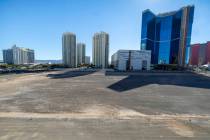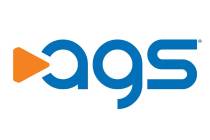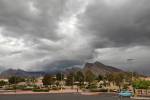Where can you find printers without ink, cameras without film? Yes, CES
If it was bigger, faster, easier, smaller, wireless, cheaper or "green" it was on display at the 2008 International Consumer Electronics Show.
I didn't see everything, but I saw enough to know that I don't want CES to leave Las Vegas. Ever.
There were gutter-cleaning robots and booth after booth of sleek, sexy phones and wireless accessories. Much of the hype went to a massive 150-inch television (that's 121/2 feet diagonally) from Matsushita, but the top gadget award went to a tiny memory card that automatically sends your pictures to a computer or photo-sharing site.
The Eye-Fi card (www.eye.fi) looks like a standard 2-gigabyte secure digital memory card, but it's also a mini Wi-Fi card that connects your camera to a wireless network via a computer running the Wi-Fi Manager software. The price is $99.99 and it's available at many retailers.
My CES favorite is photo paper that produces high-quality pictures without a drop of ink. Zero Ink, or Zink (www.zink.com) has more than 100 patents on its inkless printing process, which uses heat to activate and colorize paper that's layered with embedded color-dye crystals.
A 2-inch by 3-inch sheet of Zink paper holds 100 billion color crystals, and the printer uses 200 million heat pulses in the 30 seconds it takes to "print" the photo. The product was a CES Innovations Award honoree in the Design and Engineering category.
The first consumer application of the Zink paper is from Polaroid, which unveiled its Digital Instant Mobile Photo Printer (www.polaroid.com/onthego/). The hand-held device spits out brilliant 2-inch by 3-inch color prints from cameras connected to it. Camera phones equipped with Bluetooth technology can transfer images wirelessly to the printer. The printer costs about $150 and a 10-sheet pack of Zink paper will sell for about $8.
The Zink paper isn't limited to the small prints; it's produced on 5-foot rolls.
Expect more news from Zink soon.
A pair of low-cost laptop computers also captured my attention. The first is the green-and-white computer from One Laptop Per Child (http://laptop.org), a program that helps provide computers to children in Third World countries. I'll write more about this in a future column.
The other machine is the Asus Eee PC (http://eepc.asus.com/global). It has a 7-inch screen, runs on the Linux or Windows XP operating systems, has an 8 gigabyte hard drive and sells for $259. I saw several people using the machine in hallways or patios at CES and hope to get my hands on one soon.
We have cameras without film, printers without ink and laptops that weigh less than 2 pounds and cost less than $300.
I hope there's a 2009 CES.
Share your Internet story with me at agibes@reviewjournal.com.
TIP OF THE WEEK
Kodak i1220 Batch Scanner
This high-speed scanner makes it simple to make digital copies of old photos or documents. The batch feeder lets users lay a stack of items to be copied into the hopper and they are scanned one by one with the scanner software taking care of orienting the original. All you have to do is make sure whatever you're scanning is facing in the right direction, hit the scan button and wait for the images to appear on your computer screen. The device is available online for about $870 through various retailers.























